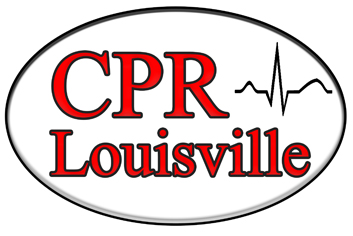UNKNOWN LAB REPORT
Unknown Number 105
Michelle Sinovcic
BIO 203: General Microbiology I
Spring 2014
INTRODUCTION
Identifying and understanding microorganisms is important for multiple reasons being that bacteria are a major cause of human disease and illness. Being able to cure more infections and illnesses can be done by being well informed of different microorganisms and how they work in different environments. This study of identifying unknown bacteria was done by using various techniques used in the microbiology laboratory class up to this point.
MATERIALS AND METHODS
A test tube of broth containing unknown bacteria labeled with the number 105 was received from the microbiology lab professor. A variety of procedures learned in microbiology lab class were performed on the unknown bacteria. These tests were performed as instructed in the microbiology course lab manual by Mcdonald, Thoele, Salsgiver, and Gero (1) unless stated differently.
The first method required was the quadrant streak method. This was done in order to isolate the two unknown bacteria on a nutrient agar plate by use of an inoculating loop, Bunsen burner, and the broth. Incubation of this plate at room temperature was then performed in order to attempt determination of two separate colonies. Growth from a colony on this plate was then tested for its Gram response through steps of gram staining using iodine, crystal violet, alcohol, and safranin in order to find one single type of bacterium. Observation under a microscope reavealed the gram response of the bacterium from the colony. Listed in Table 1 are the procedures taken, materials used, temperature of incubation, and their recorded results for the first bacterium. Included in these tests are Citrate, Glucose and Lactose fermentation, sulfur reduction through a Kligler Iron test, Urea test, and Methyl Red test.
Necessary steps were then taken to perform a Simmon’s Citrate test on the first bacterial colony using an inoculating loop sterilized by the flame of a Bunsen burner to put growth on the green agar slant. Incubation of that tube was then done for five days in a 35°C setting. Determination of the bacterium’s use of citrate as its sole source of carbon was the reason behind this test.
A Kligler Iron test was performed using growth from the first colony in order to narrow down options of the possible bacterium by determining its fermentation capabilities for Glucose and Lactose. The medium was stabbed by a flame sterilized inoculating needle with bacterial growth on it and incubated at 35°C for five days.
A Urea test was the next test completed on this gram-negative colony. This was done by stirring some of the bacterium into the pH indicator phenol red and urea medium flame sterilized inoculating loop. It was then incubated in a 35°C setting for forty-eight hours. Discovering whether or not the bacterium could produce an acid was the purpose behind this test. A Methyl Red test was also performed on the gram-negative bacteria to determine whether or not the bacterium produced acid after fermenting glucose. A flame sterilized inoculating loop with bacterial growth on it was stirred around the tube of the protein and glucose MR-VP medium and incubated at 35°C for forty-eight hours. These tests were performed in order to confirm the final result of the unknown gram-negative bacterium.
A second nutrient agar plate was streaked in the attempt to find a second of bacteria. The second method needed to isolate the second bacterium, specifically a gram-positive bacterium, was done by using an inoculating loop sterilized by a Bunsen burner flame to spread broth from the original tube onto a mannitol salt agar plate which was incubated at 35°C for four days. After no growth appeared an isolated gram-positive bacterial growth on a slant in a test tube labeled Alt 8 was then received from the lab instructor. Tests were then performed on that. Listed in Table 2 are the tests performed, materials used, temperature of incubation, and their recorded results for the second bacterium. Casein test and a Matlose test were performed.
The first procedure required on this growth was a gram stain. Crystal violet, iodine, alcohol, and safranin were used. The bacterium’s gram response was tested to narrow down choices for what this unknown may be.
A casein test was the next procedure performed on the gram-positive bacterium to determine if the bacterium could produce the enzyme casease. An inoculating loop was flame sterilized, covered with some bacterial growth, and spread onto a milk agar plate. Incubation of this plate was done in a 35°C setting for five days.
A maltose test was the next method used in order to confirm the identity of the unknown bacterium. It would determine whether or not the bacterium could produce acid from maltose fermentation. A flame sterilized inoculating loop with bacterial growth was stirred around the medium. The tube was then incubated at 35°C for five days.
RESULTS
Included in Table 1 are the tests performed, materials used, temperatures of incubation, and the results from the gram-negative bacterium, Table 2 shows these for the gram-positive. Included in Flowchart 1 are the tests and their results for the gram-negative bacterium, Flowchart 2 shows these for the gram-positive.
TABLE 1: Physiological and Biochemical Results
| TEST | REAGENTS OR MEDIA | TEMP | OBSERVATIONS | RESULTS | INTERPRETATIONS |
| Gram Stain | Crystal Violet, Iodine, Alcohol, Safranin | Pink coccobacilli | Gram negative rods | Bacterium has a cell wall with a thin layer of peptidoglycan and an outer lipid membrane that is dissolved from the alcohol | |
| Citrate test | Citrate slant | 35°C | Slant changed from green in color to blue in color | Positive | Organism’s sole source for carbon is citrate |
| Kligler Iron test | Kligler Iron slant | 35°C | Top of slant turned from yellow to red in color, Bottom of slant to bottom of tube turned from a yellow color to brighter yellow in color | Positive | Organism is able to ferment glucose, is unable reduce sulfur, is unable to ferment lactose |
| Urea test | Urea tube | 35°C | Broth stayed yellow in color | Negative | Organism is unable to produce urease |
| Methyl Red test | MRVP | 35°C | Broth changed from a yellow color to an orange color after adding methyl red | Negative | Organism is unable to produce much acid as a result of glucose fermentation |
TABLE 2: Physiological and Biochemical Results
| TEST | REAGENTS OR MEDIA | TEMP | OBSERVATIONS | RESULTS | INTERPRETATIONS |
| Gram Stain | Crystal Violet, Iodine, Alcohol, Safranin | Purple streptobacilli | Gram positive rods | Bacterium has a cell wall with a thick layer of peptidoglycan | |
| Casein test | Milk Agar | 35°C | White opaque growth on agar | Negative | Organism is unable to hydrolyze casease |
| Maltose test | Maltose tube | 35°C | Broth changed from red in color to yellow in color | Positive | Organism is able to ferment carbohydrates that produce acid |
DISCUSSION / CONCLUSION
The various tests from the microbiology lab class manual that were performed on both the gram-negative and gram-positive bacteria are what led to their identities. The first step taken was isolating the bacterium from original broth #105 into two separate colonies using the quadrant streak method on a nutrient agar plate.
After letting the first streak plate incubate at room temperature for five days there was growth on the first two streaks, but the last two had none. This growth only consisted of one distinct colony, a second was not present. This then led to the gram staining of that colony, a second streak plate on nutrient agar in an attempt to grow the needed second colony, and the use of a Mannitol Salt Agar plate.
When observing the gram stained slide of the first colony under the microscope pink coccobacilli were seen. Seeing these almost round rods proved that this was a gram-negative bacterial colony. Being that all of the gram-negative options were rods, this did not narrow down any of the possibilities.
Knowing that the gram-negative bacterium grew, the quadrant streak method was used again on a nutrient agar plate in hopes of growing the gram-positive bacterium as well. Also using the broth from #105 tube, a Mannitol Salt Agar plate was coated being that it selects for gram-positive bacterial growth. When checking the results after incubation, there was no growth on this plate, and still no second distinct colony. An isolated gram-positive bacterium labeled Alt 108 was then given.
The first test done on the gram-negative colony was a citrate test using a slant of green Simmon’s Citrate agar inoculated by putting growth on the top of the slant. After incubation the slant had turned a blue color, resulting in a positive test. This showed that the bacterium does use citrate as its primary carbon source. This also ruled out Escherichia coli as a possibility for my gram-negative bacterium. The next test was the Kligler Iron test.
The Kligler Iron test consisted of stabbing a slant in order to test for reduction of sulfur, fermentation of glucose, and fermentation of lactose. After incubating, the top of the slant had turned a red color and the bottom was yellow. These results showed a negative result for hydrogen sulfide since there was no black in the tube, which meant Proteus vulgaris was no longer an option. The red color and yellow bottom both showed the positive glucose fermentation which ruled out Pseudomonas aeruginosa. Both Proteus vulgaris and Pseudomonas aeuginosa were ruled out by the negative lactose result. The next method used was a Urea test.
This test consisted of stirring the bacterial growth into a tube of phenol red and urea to test for the presence of acid. After incubation the broth was still a yellow color, giving a negative result. This confirmed that Enterobacter aerogenes was the gram-negative bacterium. A Methyl Red test was also performed to confirm this answer.
The bacterial growth was stirred into the MR-VP and protein broth in order to determine if acid could be produced as a result of glucose fermentation. After incubation, the broth was a yellow color; a negative result. This also confirmed that the unknown bacterium was Enterobacter aerogenes.
The first test done on the gram-positive growth was a gram stain. After doing the procedure involving crystal violet, iodine, alcohol, and safranin, and viewing the slide under the microscope, purple rods were seen. The shape being rods narrowed down the options to Bacillus cereus and Bacillus subtilis. The next test performed on this growth was a casein test.
Bacterial growth was spread onto a milk agar plate in order to see if the bacterium produced casease and break down the casein. After incubation, the plate had white growth on it, giving a negative result. This negative result made it possible to rule out the option ofBacillus cereus. This meant a confirmation that the gram-positive bacterium was Bacillus subtilis. In order to get a second confirmation a maltose test was performed.
Bacterial growth was stirred into a tube containing a red maltose medium to test for acid as a result of maltose fermentation. After incubation, the liquid was a yellow color, giving a positive result for acid production. This result confirmed the bacterium as being Bacillus cereus. This was an opposite result than the casein test had shown.
After speaking with the lab professor about the results, the casein test was confirmed as having true results. The unknown gram-positive bacterium was confimed as being Bacillus cereus, and the gram-negative being Enterobacter aerogenes.
Enterobacter aerogenes is commonly seen as being the cause of lower respiratory tract infections, skin and soft-tissue infections, urinary tract infections (UTIs), endocarditis, intra-abdominal infections, septic arthritis, osteomyelitis, CNS infections, and ophthalmic infections. (2) One issue with Enterobacter infections is that they often cannot be differentiated from other acute bacterial infections.
Single-agent antimocribal therapy is typically used in the cases of Enterobacter infections. (3) Beta-lactams, Aminoglycosides, Fluroquinolones, and Trithomprim-sulfamethoxazone (TMP-SMZ) are all antibiotics used regularly to treat these types of infections. (2) An issue with this is that when getting too much exposure to these drugs resistance is often developed, which has presently shown a large issue with these infections. Due to these resistances, combining antibiotics with different structures is now used as a treatment for the infections, combination therapy.
REFERENCES
Mcdonald, Victoria, Mary Thoele, Bill Salsgiver, and Susie Gero. Lab Manual for General Microbiology. N.p.: n.p., 2011. Print.
Fraser, Susan L., MD. “Enterobacter Infections .” Enterobacter Infections. N.p., 13
Mar. 2014. Web. 24 Apr. 2014. <http://emedicine.medscape.com/article/216845-overview>.
Rogers, Kara. “Enterobacter (bacteria Genus).” Encyclopedia Britannica Online.
Encyclopedia Britannica, 10 Mar. 2010. Web. 25 Apr. 2014. <http://www.britannica.com/EBchecked/topic/685512/Enterobacter>.





